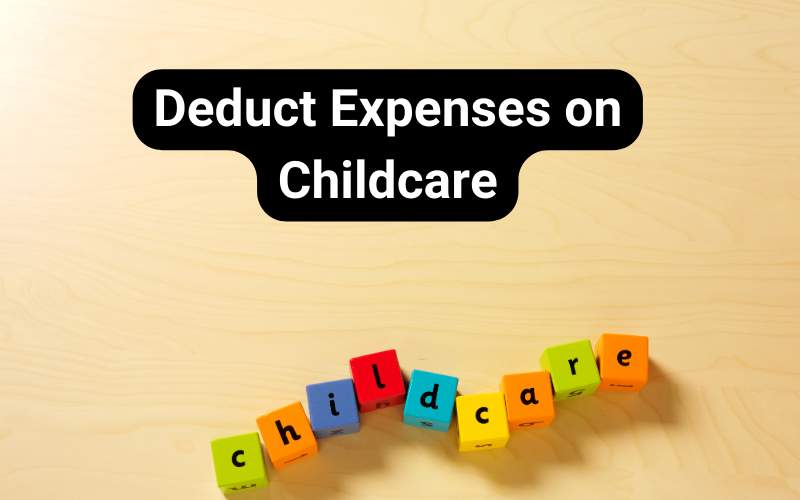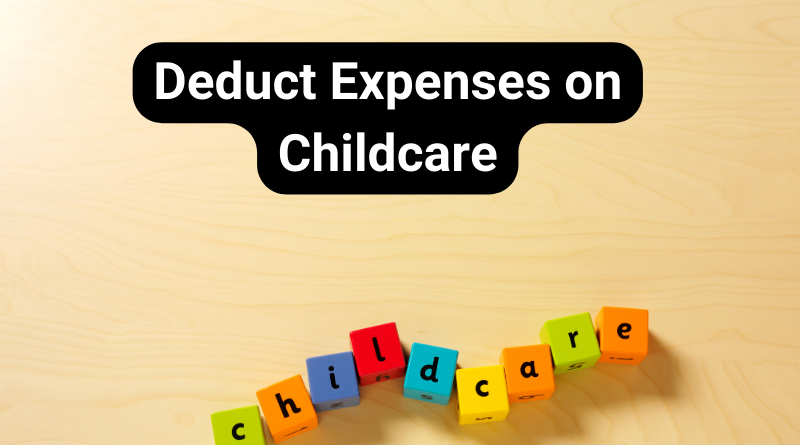How to Deduct Childcare Expenses on Your Tax Returns
1. Introduction
Why Childcare Expenses Are Tax-Deductible
Childcare expenses can be a significant financial burden for families, especially for working parents. The IRS recognizes this and offers tax relief through the Child and Dependent Care Credit, which helps offset these costs.
Purpose of the Blog
This guide provides a detailed, step-by-step explanation of how to claim childcare expenses on your tax return, ensuring you don’t miss out on valuable savings.

2. Understanding the Child and Dependent Care Credit
What Is the Child and Dependent Care Credit?
This is a tax credit that directly reduces the amount of taxes you owe, based on eligible childcare expenses for qualifying dependents.
How It Works
The IRS allows you to claim a percentage of your childcare expenses, ranging from 20% to 35%, depending on your income level.
Credit vs. Deduction
A tax credit reduces your tax liability dollar-for-dollar, making it more valuable than a deduction, which only reduces your taxable income.
3. Eligibility Requirements
Who Qualifies as a Dependent?
- Children Under 13: Eligible expenses for care apply to children below this age.
- Spouse or Dependent Incapable of Self-Care: Includes individuals with physical or mental disabilities.
Who Can Claim the Credit?
- You must have earned income from employment or self-employment. If married, both spouses must have earned income unless one is a full-time student or disabled.
- Filing statuses eligible for this credit include:
- Single.
- Head of Household.
- Married Filing Jointly.
Qualifying Childcare Providers
- Licensed daycare centers.
- Babysitters, nannies, and after-school programs.
- Summer day camps (but not overnight camps).
4. Qualifying Expenses
What Expenses Can Be Claimed?
- Payments for care provided while you work or look for work.
- Examples include daycare centers, nannies, babysitters, and educational programs specifically for care.
Exclusions
- Payments made to:
- Family members under the age of 19.
- Dependents you already claim on your tax return.
- Overnight camps or schooling.
5. Maximum Credit and Expense Limits
Expense Limits
- You can claim up to:
- $3,000 in expenses for one qualifying dependent.
- $6,000 for two or more qualifying dependents.
Credit Percentage
- The IRS allows 20% to 35% of qualifying expenses as a credit.
- The maximum credit is $1,050 for one dependent and $2,100 for two or more.
Impact of Income
- Families with lower adjusted gross income (AGI) qualify for the higher percentage (35%).
- As your income increases, the credit percentage reduces but does not fall below 20%.
6. Steps to Deduct Childcare Expenses
1. Gather Necessary Information
- Collect receipts and invoices for all childcare expenses.
- Obtain the childcare provider’s name, address, and Taxpayer Identification Number (TIN).
2. Fill Out IRS Form 2441
- Complete Form 2441: Child and Dependent Care Expenses.
- Attach it to your federal income tax return (Form 1040).
3. Calculate the Credit
- Total your eligible expenses (up to $3,000 for one dependent or $6,000 for two or more).
- Apply the appropriate percentage (20%-35%) based on your AGI.
4. File Your Taxes
- Include Form 2441 and ensure all details are accurate to avoid delays or rejections.
7. Common Mistakes to Avoid
Missing Documentation
Failing to provide accurate receipts or missing provider information can lead to rejected claims. Keep detailed and organized records.
Claiming Ineligible Providers
Payments to family members under 19 or dependents you already claim cannot be included.
Incorrect Expense Calculation
Overstating expenses beyond the allowable limits of $3,000 or $6,000 can trigger an IRS audit.
8. Additional Tips for Maximizing Benefits
Use a Dependent Care Flexible Spending Account (FSA)
- Some employers offer FSAs, allowing you to set aside pre-tax dollars for childcare expenses. While you can’t double-dip with the Child and Dependent Care Credit, an FSA may offer greater savings for some families.
Keep Detailed Records
Maintain a file with contracts, invoices, receipts, and TINs from all childcare providers.
File Early
Filing your taxes early minimizes the risk of errors and ensures timely processing.
9. Conclusion
Recap
The Child and Dependent Care Credit is a valuable tax benefit that helps reduce the financial burden of childcare expenses. By understanding the eligibility requirements, qualifying expenses, and the correct steps to claim this credit, families can save significantly on their taxes.
Encouragement to Claim
Don’t leave money on the table—ensure you take full advantage of this credit to alleviate childcare costs.
Call to Action
Consult a tax professional or use tax preparation software like TurboTax or H&R Block to ensure accuracy and maximize your savings.


